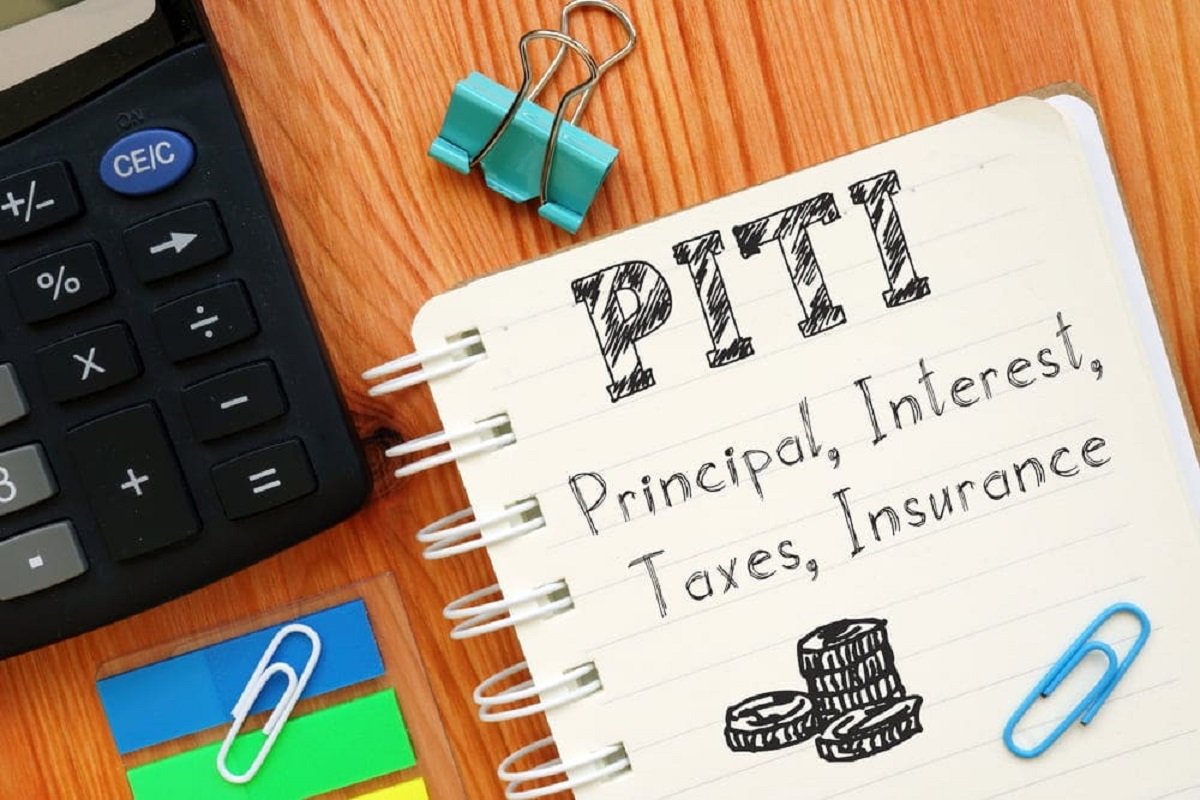What is PITI?
When it comes to mortgage lending, you may have come across the term “PITI.” But what exactly does it stand for? PITI is an acronym that represents the four key components of a mortgage payment: Principal, Interest, Taxes, and Insurance.
A mortgage payment consists of more than just the amount you borrowed (the principal) and the interest charged by the lender. It also includes other expenses such as property taxes and insurance that lenders require to protect their investment.
Understanding PITI is crucial when it comes to budgeting for your home purchase. By breaking down your mortgage payment into these distinct components, you gain a better understanding of where your money is going and how your monthly expenses are allocated.
Let’s take a closer look at each component of PITI:
- Principal: The principal is the original amount you borrowed to purchase your home. Each month, a portion of your mortgage payment goes towards reducing the principal balance.
- Interest: Interest is the cost of borrowing money from the lender. It is calculated based on the interest rate and the outstanding principal balance. In the early years of your mortgage, a larger portion of your payment goes towards interest.
- Taxes: Property taxes are assessed by local government authorities based on the value of your property. They are used to fund various municipal services. Your lender may require you to make monthly tax payments as part of your mortgage payment, which are then used to pay your property taxes when they are due.
- Insurance: Mortgage insurance protects the lender in case you default on your loan. It is typically required for borrowers who put down less than 20% as a down payment. Additionally, homeowners insurance protects your property and belongings in case of damage or theft.
By including taxes and insurance in your mortgage payment, lenders ensure that these expenses are paid on time. This reduces the risk of you falling behind on your payments, which could result in foreclosure.
Calculating PITI is relatively straightforward. Add up your monthly principal and interest, and then add the monthly tax and insurance payments. This total represents your PITI payment, which is the amount you will owe each month.
Knowing your PITI is essential to determine whether you can afford a particular home. It helps you assess your monthly expenses and determine if you can comfortably meet all your financial obligations. Before you decide to purchase a home, it’s crucial to evaluate your PITI payment in relation to your income and other expenses.
In summary, PITI represents the four essential components of a mortgage payment: Principal, Interest, Taxes, and Insurance. By understanding these components and their significance, you can make informed decisions regarding your home purchase and budgeting.
The Meaning of PITI
When you embark on your homebuying journey, you’ll encounter various unfamiliar terms and acronyms, and one that frequently comes up in mortgage lending is “PITI.” So what exactly does PITI mean?
PITI is an acronym that stands for Principal, Interest, Taxes, and Insurance. It represents the four main components of a mortgage payment and is widely used in the real estate industry. Understanding the meaning of PITI is crucial for homebuyers as it provides a comprehensive breakdown of the expenses associated with homeownership.
Let’s delve into the meaning of each component:
- Principal: The principal refers to the initial amount of money you borrowed to purchase your home. It is the loan amount that you are required to repay over time. When you make your mortgage payment, a portion of it goes towards reducing the principal balance.
- Interest: Interest is the cost of borrowing money from the lender. It is calculated based on the interest rate applied to your loan amount. The interest component of your mortgage payment compensates the lender for lending you the funds. In the early years of your mortgage, a larger portion of your payment goes towards interest, gradually shifting towards principal as you make payments over time.
- Taxes: Taxes are an integral part of homeownership. When you own a property, you are responsible for paying property taxes, which vary based on your location and the value of your home. The tax component of PITI represents the estimated monthly amount that is set aside to cover your property taxes. Lenders often collect this amount as part of your mortgage payment and hold it in an escrow account to ensure the timely payment of your property taxes.
- Insurance: Insurance is another key component of PITI. It includes two types: homeowner’s insurance and, if applicable, private mortgage insurance (PMI). Homeowner’s insurance protects your home and belongings from various risks, such as fire, theft, or natural disasters. PMI, on the other hand, is required when the down payment on your home is less than 20% of its purchase price. It protects the lender in case you default on the loan. Similar to taxes, insurance payments are often collected together with your mortgage payment and deposited into an escrow account for timely disbursement.
Knowing the meaning of PITI enables homebuyers to gain a comprehensive understanding of their monthly mortgage payment. By breaking down your payment into these four components, you can see how much is going towards repaying your loan, covering interest charges, addressing tax obligations, and safeguarding your property with insurance.
It’s important to note that PITI is an estimation of your overall housing expenses, but it does not include other costs such as homeowner association (HOA) fees, maintenance, or utilities. These additional expenses should be factored into your overall budget when considering homeownership.
By understanding PITI and the meaning behind each component, you can make more informed decisions regarding your mortgage and budgeting. It helps you determine your affordability, plan your monthly expenses, and ensure that you can comfortably meet your financial obligations as a homeowner.
In summary, PITI represents Principal, Interest, Taxes, and Insurance, which are the four main components of a mortgage payment. Understanding the meaning of PITI allows you to comprehend the breakdown of your monthly expenses and make informed decisions throughout the homebuying process.
Breaking Down the Acronym
When it comes to mortgage lending, understanding the acronym PITI is vital. Each letter of the acronym represents an essential component that makes up your mortgage payment. Let’s break down the PITI acronym to gain a deeper understanding of each element:
- Principal: The “P” in PITI stands for principal. This refers to the initial amount of money you borrowed to purchase your home. It is the loan amount that needs to be repaid over a specific period, usually through monthly installments. Every payment you make towards your mortgage reduces the principal balance, gradually building equity in your home.
- Interest: The “I” in PITI represents interest. Interest is the cost of borrowing money from the lender. Your mortgage interest rate, which is determined by factors such as your creditworthiness and prevailing market rates, determines the interest you owe. In the early years of your mortgage, a significant portion of your monthly payment goes towards interest, gradually decreasing as you continue making payments.
- Taxes: The “T” in PITI denotes taxes. Property taxes are assessed by local government authorities based on the value of your property. These taxes serve to fund local services like schools, roads, and public facilities. Lenders often require borrowers to include an estimated monthly tax amount in their mortgage payment, which is collected in an escrow account. When the tax bill is due, the funds in the escrow account are used to pay it on your behalf.
- Insurance: The “I” in PITI also represents insurance. Homeowners insurance protects your property and its contents from various risks, such as fire, theft, or natural disasters. It provides financial coverage for repairs or replacements in case of damage or loss. Additionally, if your down payment is less than 20% of the purchase price, lenders typically require private mortgage insurance (PMI) to protect their investment in case of default.
The acronym PITI provides a comprehensive breakdown of the components that make up your mortgage payment. Principal and interest are directly related to paying off your loan and compensating the lender for lending you the funds. Taxes and insurance are essential for maintaining the value and protecting the property you’ve borrowed against.
By understanding the breakdown of the PITI acronym, you can have a clearer perspective on how your monthly mortgage payment is allocated. It allows you to see the portion dedicated to reducing your loan balance, covering the interest charges, paying property taxes, and maintaining insurance coverage.
Moreover, lenders often calculate your debt-to-income ratio, which takes into account PITI payments along with other monthly debt obligations when assessing your loan eligibility. Being aware of the different elements of PITI empowers you to evaluate the affordability of a mortgage and plan your budget accordingly.
In summary, the PITI acronym stands for Principal, Interest, Taxes, and Insurance, representing the essential components of a mortgage payment. Breaking down this acronym helps you understand how your money is allocated and allows for an informed assessment of your mortgage affordability.
Understanding Principal
When discussing mortgage payments and the PITI acronym, the “P” refers to principal. Understanding what principal means is essential for homeowners and potential buyers:
In the context of a mortgage, principal refers to the original amount of money borrowed from a lender to finance the purchase of a home. It is the loan amount that you are required to repay over a specified period, typically through monthly installments.
Each time you make a mortgage payment, a portion of it goes towards reducing the principal balance. This reduction in principal contributes to building equity in your home—equity being the difference between the market value of your property and the outstanding balance on your mortgage.
Understanding principal is crucial as it directly impacts the overall cost of your mortgage and the rate at which you build equity. Here are a few key points to grasp about principal:
- Loan Amount: The principal represents the loan amount you initially borrowed to purchase your home. It is a substantial sum and determines the total amount you will repay over the life of the loan.
- Interest Calculation: The interest you pay on your mortgage is calculated based on the remaining principal balance. As you make your monthly mortgage payments and reduce the principal, the interest charged by the lender also decreases. Thus, over time, a larger portion of your payment goes towards reducing the principal balance.
- Equity Building: As you make payments towards the principal balance, your equity in the property grows. Equity is an asset and represents the portion of the property that you own outright, as opposed to owing to the lender. Increased equity can provide financial security and open up opportunities for additional borrowing or asset appreciation.
- Amortization Schedule: Your mortgage agreement typically includes an amortization schedule—a table that outlines the repayment plan over the loan term. The schedule shows the breakdown of principal and interest payments, making it easier to track the reduction in principal balance.
- Extra Principal Payments: In some cases, homeowners opt to make extra principal payments to accelerate the process of paying down the loan balance and building equity. By paying more than the required monthly payment, you can potentially save on interest costs and shorten the overall term of the loan.
Understanding principal empowers homeowners to make informed decisions regarding their mortgage. It allows you to evaluate the impact of interest rates, calculate equity growth, and consider strategies for paying down your loan faster.
Keep in mind that while principal is one component of your monthly mortgage payment, it does not include taxes or insurance. These additional expenses contribute to the complete PITI payment, which represents the total amount you owe each month.
In summary, principal refers to the original loan amount borrowed from a lender to purchase a home. Understanding principal is crucial for homeowners as it affects the overall cost of the mortgage and the rate at which equity in the property is built.
Understanding Interest
When it comes to mortgage payments and the PITI acronym, the “I” represents interest. Understanding what interest means is crucial for homeowners and prospective buyers:
In the context of a mortgage, interest is the cost of borrowing money from a lender. It is the additional amount charged to you for the privilege of using the loaned funds to finance your home purchase. The interest rate is expressed as a percentage and is applied to the outstanding principal balance of your mortgage.
Here are some key points to understand about interest:
- Calculation: Interest on a mortgage is typically calculated using a fixed or adjustable interest rate. The interest is applied to the remaining principal balance of your mortgage. In the early years of your mortgage, a larger portion of your monthly payment goes towards interest, while the proportion towards the principal gradually increases over time.
- Cost of Borrowing: When you borrow money from a lender, you are essentially paying for the opportunity to use those funds. The interest charged compensates the lender for the risk they are taking and the time value of money. The interest rate on your mortgage depends on factors such as your creditworthiness, prevailing market rates, and the terms of your loan.
- Effect on Monthly Payments: The amount of interest you owe directly affects the total cost of your mortgage and the size of your monthly payments. A higher interest rate results in higher monthly payments, while a lower interest rate decreases the monthly payment amount.
- Interest Types: There are two main types of interest: fixed and adjustable. With a fixed-rate mortgage, the interest rate remains constant throughout the entire loan term, providing stability and predictability in your payments. Adjustable-rate mortgages (ARMs) have interest rates that are subject to periodic adjustments based on market conditions, which can result in fluctuations in your monthly payment amount.
- Interest Deductibility: In some countries, mortgage interest payments may be tax-deductible. This can provide financial benefits to homeowners, reducing their taxable income and potentially resulting in lower overall tax liabilities.
Understanding interest is essential as it helps determine the overall cost of borrowing and the total amount you will repay over the life of the loan. By considering factors such as interest rates, loan terms, and the type of mortgage, you can make informed decisions regarding your mortgage and budgeting.
Mortgage interest is a significant component of your monthly PITI payment, along with principal, taxes, and insurance. By understanding how much of your monthly payment goes towards interest, you can also assess the potential benefits of making extra principal payments to save on interest costs and pay off your mortgage faster.
In summary, interest is the cost of borrowing money from a lender and is expressed as a percentage of the outstanding principal balance. Understanding interest helps homeowners evaluate the overall cost of their mortgage, consider different interest rate options, and make informed decisions regarding their loan and financial planning.
Understanding Taxes
When it comes to mortgage payments and the PITI acronym, the letter “T” represents taxes. Understanding what taxes entail is crucial for homeowners and potential buyers:
In the context of homeownership, taxes refer to property taxes assessed by local government authorities based on the value of your property. Property taxes are an essential part of owning a home, and they fund various municipal services like schools, roads, and public facilities.
Here are some key points to understand about taxes:
- Tax Assessment: Local government authorities assess property taxes based on a specific formula that considers factors such as the assessed value of the property, the local tax rate, and any applicable exemptions or deductions. The assessed value of the property can be determined through routine evaluations or upon the purchase of a new property.
- Tax Collection: Mortgage lenders often require borrowers to include an estimated monthly tax payment as part of their overall mortgage payment. This ensures that the homeowner sets aside enough funds to cover property taxes when they become due. The collected tax amount is typically held in an escrow account until the tax bill is issued, and the funds are then disbursed to the appropriate authorities.
- Escrow Account: An escrow account is a separate account that holds funds collected as part of your mortgage payment for expenses such as taxes and insurance. It is managed by the lender and ensures that these payments are made on time. By including taxes in your mortgage payment, lenders can help prevent homeowners from falling behind on their tax obligations.
- Property Tax Exemptions and Deductions: Depending on your jurisdiction, you may qualify for property tax exemptions or deductions. These can help reduce your tax liability and lower your overall housing expenses. Common examples include homestead exemptions, senior citizen exemptions, or deductions for energy-efficient improvements.
- Tax Rate Changes: Property tax rates can change over time due to factors such as changes in local government budgets or shifts in property values. It’s important for homeowners to stay informed about any potential tax rate changes in their area, as it can impact their overall housing costs.
Understanding taxes is essential as they represent a significant financial responsibility for homeowners. By including taxes in the PITI acronym, homeowners gain a more comprehensive understanding of their overall housing expenses and can plan their budgets accordingly.
Property taxes are an ongoing cost of homeownership and need to be factored into your financial planning. They contribute to the total monthly mortgage payment, along with principal, interest, and insurance. Understanding the amount you will owe in property taxes allows for better financial planning and ensures that you are prepared for the associated expenses.
In summary, property taxes are assessed by local government authorities based on the value of your property. Understanding taxes is crucial for homeowners to accurately assess their overall housing expenses and properly plan their budgets.
Understanding Insurance
When discussing mortgage payments and the acronym PITI, the last “I” stands for insurance. Understanding what insurance entails is crucial for homeowners and potential buyers:
In the context of homeownership, there are two types of insurance commonly associated with mortgage payments: homeowner’s insurance and private mortgage insurance (PMI).
Here are some key points to understand about insurance:
- Homeowner’s Insurance: Homeowner’s insurance, also known as hazard insurance, is a type of insurance coverage that protects your property and its contents from various risks, such as fire, theft, vandalism, or natural disasters. It provides financial assistance for repairs or replacements in case of damage or loss. Homeowner’s insurance is typically required by lenders to protect their investment in your property.
- Private Mortgage Insurance (PMI): Private mortgage insurance is a type of insurance that protects the lender in case the borrower defaults on the loan. It is required for borrowers who make a down payment of less than 20% of the home’s purchase price. PMI payments are made by the borrower along with their mortgage payments until the loan-to-value ratio reaches a certain threshold, typically 80%.
- Cost of Insurance: The cost of homeowner’s insurance and PMI varies depending on factors such as the value of the property, location, and insurance provider. Homeowner’s insurance premiums are typically paid annually or as part of your monthly mortgage payment, while PMI payments are made monthly along with your mortgage payment.
- Insurance Requirements: Lenders often have specific requirements for homeowner’s insurance, including the minimum coverage amounts and deductibles. It’s important to ensure that your insurance policy meets these requirements to satisfy the terms of your mortgage agreement.
- Additional Coverage: In addition to standard homeowner’s insurance, you may opt for additional coverage based on your specific needs. This can include coverage for specific valuables, additional liability protection, or additional riders for certain risks that may not be covered in your standard policy.
Understanding insurance is crucial as it protects both the homeowner and the lender. It safeguards your property and belongings from unforeseen risks, provides financial assistance in case of damage, and ensures that the lender’s investment in your home is protected.
Insurance payments contribute to the overall PITI acronym, representing a portion of your monthly mortgage payment. By understanding the insurance component, homeowners can accurately estimate their housing expenses and ensure that they are adequately covered in case of an unfortunate event.
In summary, insurance is an important element of homeownership, consisting of both homeowner’s insurance and private mortgage insurance (PMI). Understanding insurance coverage and costs helps homeowners protect their property and meet the requirements set by lenders.
Calculating PITI
Calculating PITI is an essential step in understanding the total amount you will owe each month for your mortgage payment. PITI represents Principal, Interest, Taxes, and Insurance—four key components that make up your mortgage payment. To calculate PITI, you need to consider each component:
- Principal: The principal is the original amount you borrowed to purchase your home. It is the loan amount you are required to repay over a specific period. To calculate the principal portion of your PITI, refer to your loan agreement or mortgage statement.
- Interest: The interest is the cost of borrowing money from the lender. The interest rate and the remaining principal balance determine the interest amount. You can calculate the interest portion of your PITI by multiplying the interest rate by the outstanding loan balance.
- Taxes: Property taxes vary based on your location and the assessed value of your property. To calculate the tax portion of your PITI, you need to know the annual property tax amount. Divide this amount by 12 to determine the monthly tax payment. Some lenders require borrowers to make monthly tax payments as part of their mortgage payment, which are then held in an escrow account to cover the annual tax bill.
- Insurance: Insurance costs consist of homeowner’s insurance and, if applicable, private mortgage insurance (PMI). The homeowner’s insurance premium is usually paid annually or as part of your monthly mortgage payment. If you have PMI, it is also included in your monthly mortgage payment. To calculate the insurance portion of your PITI, add the annual homeowner’s insurance premium to the monthly PMI amount.
Once you have calculated the principal, interest, tax, and insurance portions, sum them up to get the total PITI payment. This amount represents the total amount you owe each month to cover your mortgage payment, including these four components.
Keep in mind that calculating PITI provides you with an estimate of your monthly mortgage payment. It does not include other expenses such as homeowner association (HOA) fees, maintenance costs, or utilities. These additional expenses should be factored into your overall budget when considering homeownership.
Calculating PITI allows you to assess your affordability and plan your budget. It gives you an understanding of the different elements that contribute to your monthly mortgage payment. By knowing the breakdown of your payment, you can make informed decisions, evaluate your financial capabilities, and ensure that you are prepared for the expenses associated with homeownership.
In summary, calculating PITI involves determining the principal, interest, tax, and insurance portions of your mortgage payment and summing them up. Understanding how each component contributes to your monthly payment allows you to better evaluate your affordability and plan your budget accordingly.
Importance of Knowing PITI
Understanding PITI, which represents Principal, Interest, Taxes, and Insurance, is crucial for homeowners and potential buyers. Knowing your PITI has several important benefits:
Accurate Budgeting: Knowing your PITI allows you to accurately budget for your homeownership expenses. By understanding the breakdown of your monthly mortgage payment, you can assess how much of your income goes towards the principal, interest, taxes, and insurance. This enables you to plan your finances effectively and ensure that you can comfortably meet your mortgage obligations.
Affordability Assessment: PITI provides a clear picture of the total cost of homeownership. By considering your monthly PITI payment in relation to your income and other expenses, you can determine if a particular home is affordable for you. Understanding your affordability helps you avoid overextending yourself financially and ensures that you can maintain a sustainable mortgage payment over the long term.
Identification of Changes: Knowing your PITI enables you to spot any changes in your mortgage payment promptly. If there are fluctuations in property taxes or insurance premiums, being aware of your PITI allows you to identify and address these changes. This gives you the opportunity to adjust your budget accordingly and ensure that you can meet the new payment amount.
Comparison of Loan Options: When shopping for a mortgage, knowing your PITI allows you to compare loan options effectively. By evaluating the principal, interest rate, expected property taxes, and insurance costs, you can determine which loan provides the most favorable overall payment structure for your financial situation. This empowers you to choose a mortgage that suits your needs and helps you achieve your homeownership goals.
Equity Planning: Understanding your PITI helps you plan for building equity in your home. As you make mortgage payments, a portion goes toward reducing the principal balance, increasing your equity. By knowing the breakdown of your PITI, you can evaluate strategies such as making extra principal payments to build equity faster and potentially save on long-term interest costs.
Lender Compliance: Lenders often require borrowers to make monthly tax and insurance payments as part of their mortgage payment. Understanding your PITI ensures that you are compliant with these lender requirements. It helps you avoid potential issues, such as falling behind on tax payments or insurance premiums.
In summary, knowing your PITI is essential for homeowners and buyers alike. It enables accurate budgeting, helps assess affordability, identifies changes in mortgage payments, facilitates loan comparison, assists with equity planning, and ensures compliance with lender requirements. By understanding your PITI, you can make informed decisions regarding your mortgage, plan your finances effectively, and maintain a stable homeownership experience.
Conclusion
Understanding PITI—Principal, Interest, Taxes, and Insurance—is of utmost importance when it comes to mortgage lending. This acronym represents the four key components that make up your mortgage payment. By comprehending the meaning and significance of each component, homeowners and potential buyers can gain valuable insights into their overall housing expenses and make informed financial decisions.
Knowing your PITI allows for accurate budgeting and assessment of affordability. By understanding how much of your income goes toward each component, you can plan your finances effectively and ensure that you can comfortably meet your mortgage obligations. It also helps you compare loan options, evaluate associated costs, and choose a mortgage that aligns with your financial goals.
Being aware of PITI enables homeowners to identify changes in their mortgage payment promptly. Fluctuations in property tax rates or insurance premiums can impact your monthly payment. Having a clear understanding of your PITI allows you to modify your budget accordingly and ensure that you can meet the new payment amount. It also helps you comply with lender requirements, such as making timely tax and insurance payments.
PITI plays a critical role in equity planning as well. The principal portion of your PITI payment contributes to building equity in your home. By understanding the breakdown of your payment, you can evaluate strategies like making extra principal payments to build equity faster and potentially save on long-term interest costs.
In summary, understanding PITI empowers homeowners and buyers to make informed decisions regarding their mortgage and budgeting. It provides insights into the total cost of homeownership, facilitates accurate budgeting, ensures compliance with lender requirements, and helps with equity planning. By knowing your PITI, you can navigate the complexities of mortgage lending with confidence and maintain a stable and sustainable homeownership experience.

























